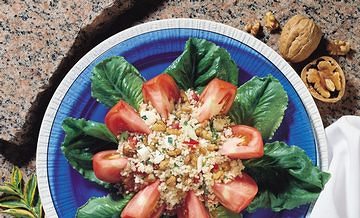 If you’ve iced an injury to keep down swelling, or noticed redness around a cut or scrape to the skin, you’ve “seen” inflammation.
If you’ve iced an injury to keep down swelling, or noticed redness around a cut or scrape to the skin, you’ve “seen” inflammation.
Sometimes we just feel it with sore muscles after a strenuous workout or with a headache. These acute, or short-term, inflammatory reactions are necessary for the body’s ability to heal from all kinds of injuries and infection.
In contrast, chronic, or long-term, inflammation is not clearly seen or felt. An extended infection or repeated injuries may stimulate ongoing inflammation. Eventually, inflammation becomes increasingly self-perpetuating. Chronic inflammation causes damage to the body and keeps it in an ongoing state of stress.
Inflammation is a central characteristic of many diseases, such as celiac disease, rheumatoid arthritis, and others. For chronic health conditions such as obesity, diabetes, heart disease, and cancer, it is unclear whether the inflammation or the disease comes first. In either case, once present, these conditions stimulate further inflammation.
Certain behaviors can also increase or decrease chronic inflammation. It is aggravated with excessive exercise, while diminished with gradual increases in exercise and fitness levels over time. Smoking, excessive alcohol consumption, and poor stress management all increase inflammation.
While no single food will overcome multiple harmful behaviors, how we eat is one action we can all take to help our bodies fight chronic inflammation.[i] Food compounds such as fatty acids can help calm inflammation, and certain foods have more beneficial compounds than others. For example, walnuts are high in an omega-3 fat called ALA that has been shown to reduce inflammation in cell culture and animal studies, which are important steps in formulating hypotheses about how nutrition may affect human health.[ii] The effects of anti-inflammatory compounds in humans and their significance to human health is still being explored through research.[iii],[iv] However, there is research to show that walnuts may play a part in reducing the risk of diabetes and cardiovascular disease (both of which are related to inflammation in the body) when consumed as part of a plant-forward diet, such as the Mediterranean diet.[v],[vi]
What does a “healthful plant-forward diet” look like? The majority of food eaten from day to day comes from plants: nuts, seeds, legumes, vegetables, fruits, and whole grains. Putting entrée salads at the center of the plate is a great way to eat a wider variety of plant foods and pack more nutrition into every bite. When fats are added, they should be unsaturated fats, such as those found in nuts, seeds, and grains. Smaller portions of animal foods can be eaten, such as lean meats and dairy (to keep saturated fat intake low), fatty fish, and eggs. Of course, most people love a sweet ending to a meal or a snack in the afternoon. Healthful eating does not have to be restrictive. Smart desserts and treats can also be loaded with the goodness of walnuts, fruits, and grains. Check out choosemyplate.org for more tips on eating healthfully.
As you embark on a new year, be good to yourself with foods that nourish and support a healthful lifestyle. The effects of chronic inflammation will not be immediately obvious, but getting it under control can go a long way towards supporting healthful aging. Start down a healthier path with your next bite!
[i]Galland L. Diet and inflammation. Nutrition in Clinical Practice. 2010:25(6):634-40.
[ii]Hardman E. Diet components can suppress inflammation and reduce cancer risk, Nutrition, Research and Practice. 2014;8(3):233-40.
[iii]Calder et al. A consideration of biomarkers to be used for evaluation of inflammation in human nutritional studies. Br J Nutr. 2013;109(S1):S1-34.
[iv]Albers et al. Monitoring immune modulation by nutrition in the general population: identifying and substantiating effects on human health. Br J Nutr. 2013:110(S2):S1-30.
[v]Kris-Etherton PM. Walnuts decrease risk of cardiovascular disease: a summary of efficacy and biologic mechanisms. J Nutr. 2014 Apr;144(4 Suppl):547S-554S.
[vi]Pan A, Sun Q, Manson JE, Willett WC, Hu FB. Walnut consumption is associated with lower risk of type 2 diabetes in women. J Nutr. 2013 Apr;143(4):512-8.
